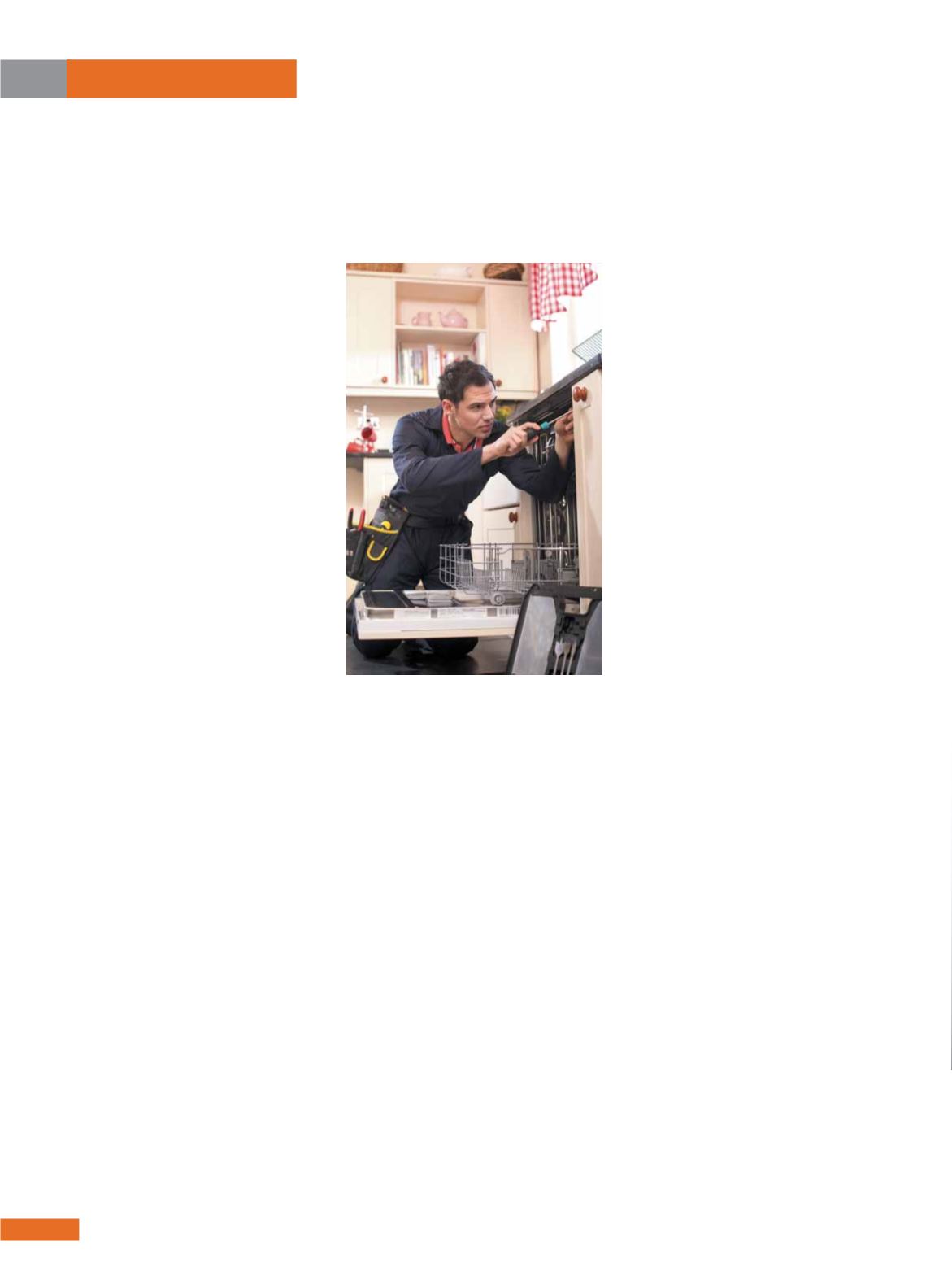

4 2
E L E CT R I C AL CONNE CT I ON
AUTUMN 2 01 5
MAINTENANCE
Let’s dish about dishwashers
D
omestic dishwashers differ
from the commercial units
installed in large restaurants
and institutional kitchens.
In the latter the water is super heated,
typically by externally supplied steam
circulated through a heat exchanger. The
idea is that very hot soapy wash water
followed by a very hot rinse ensures
consistent cleaning of dishes and glasses,
without the need for inspection.
A conveyer carries dishes past top
and bottom wash and rinse spray heads.
Workers load and unload dishes at the front
and rear ends of these big machines.
The domestic dishwasher is much more
compact. Hot water may be supplied
through a screw-on connection to the
kitchen sink hot tap, with a discharge pipe
placed in the sink. Otherwise the machine
is plumbed into the hot water system and
the drain.
A dishwasher mounted on swivelling
casters can be rolled about the kitchen and
parked out of the way when not in use.
Because it is front loading, the top can be
used for another purpose. Some home-
owners place a large cutting board on it.
The residential model does not feed
dishes through in a continuous flow like the
large commercial units, so it operates on a
timed cycle for cleaning, rinsing, and drying
by an electric element and air blower.
When it comes to repairs, if there is no
sound and no power light the repair may
be simple. Check to see if the breaker in the
entrance panel or load centre is tripped.
If it is, reset the breaker and see if the
dishwasher performs normally. If the circuit
breaker trips immediately, there is a short
circuit in the supply wiring or internally.
Caution is needed to ensure that the
outer cabinet is not energised. Check it
with a neon test light or a multimeter.
Where water and electricity come
together in an appliance, especially if it is
not new, there is potential for shock to the
technician and the end user. For this reason,
it’s a good idea to consult a plumber.
Such an appliance should be connected
only to a ground-fault circuit interrupter. The
receptacle (if it is cord and plug-connected)
should be checked with a circuit analyser
to make sure the wiring is correct and the
equipment ground has continuity back to
the service and system ground.
If the circuit breaker holds, but trips
after a certain interval, watch the timer
and see if this occurs as the machine
enters a given state. Another possibility
is that the motor is ‘tired’, with partly
deteriorated winding insulation.
If the breaker holds but the machine is
still unresponsive, several possibilities must
be considered.
After checking the supply wiring, you
can remove the access panel and check
voltage at the input terminals – and at the
power light, timer, printed circuit board and
motor terminals.
Perhaps an easier approach is to begin
with the door switch. Just about all
appliances have a door or interlock switch.
Its purpose is to make sure the power is cut
off when the door is opened so that the user
or an inquisitive child will not be injured.
The switch can fail, so as to be always
closed (no protection) or always open
(appliance will not run).
The switch may fail electrically or its
linkage may be worn or out of alignment.
Either way, the mechanism should not
be disabled except temporarily for test
purposes, as serious injury can result.
Putting a little extra pressure by
hand on the door will often make the
dishwasher spring to life. If this is the case,
the repair is simple.
A further test, with the door open, involves
depressing the switch actuator by hand to
see if the machine powers up. However,
be extremely wary of injury without the
protection of the interlock switch.
Still another test, with power
disconnected, is to check the switch with a
multimeter set to a low range in the ohms
function. The reading with the switch
open should be infinite ohms, and with the
switch closed it should be near zero.
The switch is also defective if, while the
mechanism is jiggled, the resistance is seen
to fluctuate erratically. Switch replacement
is a simple matter.
If any of the above measures don’t
Domestic dishwashers are
practically standard equipment
these days.
David Herres
outlines procedures for
diagnosing and repairing them.
















